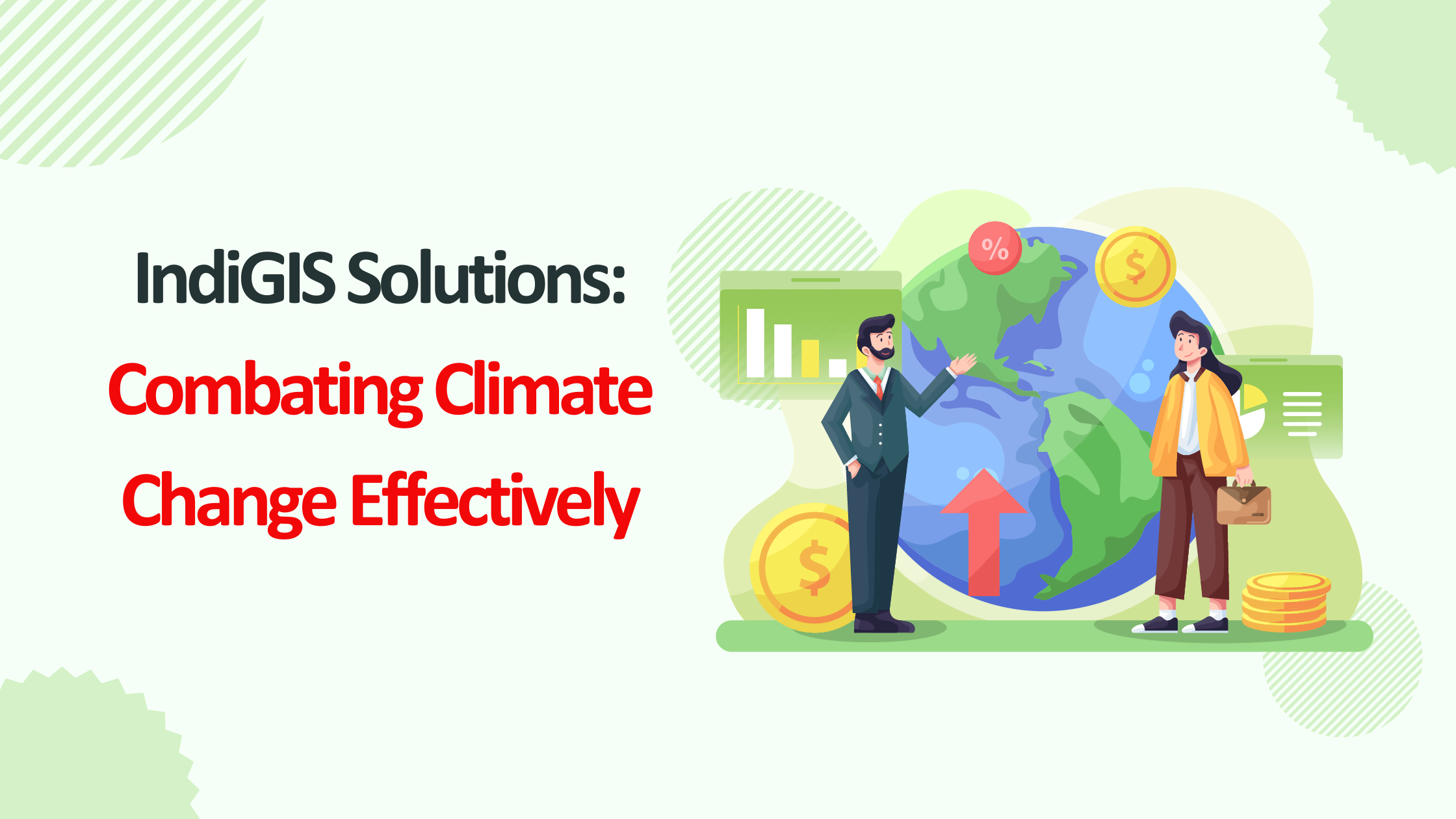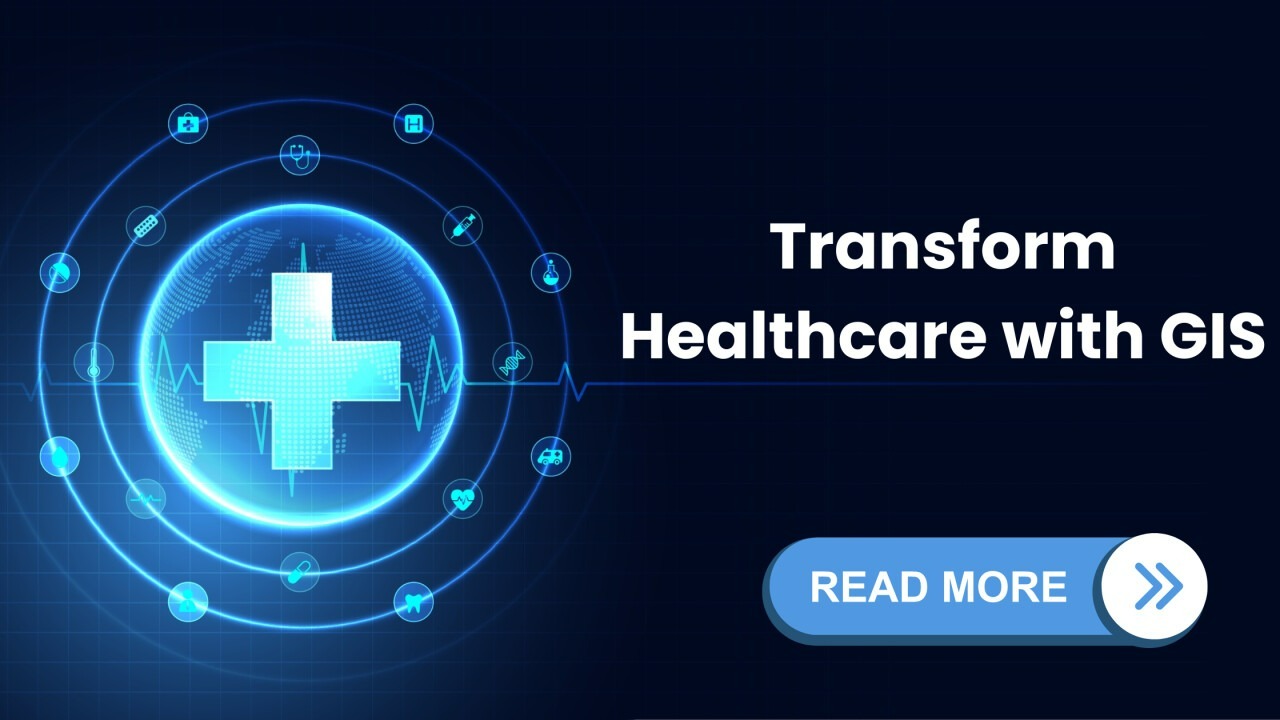Climate change is an urgent global issue demanding advanced technological solutions for effective management and resolution. Geographic Information Systems (GIS) have emerged as indispensable tools in this endeavor, offering robust capabilities for monitoring environmental changes, implementing mitigation strategies, and fostering innovative solutions. With the ability to analyze spatial and temporal data, GIS equips stakeholders with actionable insights to combat climate challenges effectively.
This comprehensive guide explores the pivotal role of GIS services in tackling climate change through monitoring, mitigation, and innovation, alongside their practical applications, benefits, and future trends.
1. GIS and Climate Change Monitoring: Understanding the Crisis
Monitoring is the cornerstone of climate action. GIS integrates satellite imagery, remote sensing, and real-time data collection, creating a comprehensive picture of environmental changes over time.
Applications of GIS in Monitoring
- Tracking Temperature Variations: GIS maps global temperature changes to identify warming trends and regions experiencing extreme weather patterns.
- Deforestation Detection: With high-resolution satellite imagery, GIS monitors forest cover, highlights deforestation hotspots, and tracks reforestation efforts.
- Glacier and Ice Cap Melting: GIS tools analyze changes in ice coverage, providing essential data on sea-level rise risks.
- Air Quality Monitoring: GIS maps pollutant concentrations across regions, aiding policies aimed at reducing emissions and improving public health.
Real-World Example
The Amazon Conservation initiative employs GIS to monitor deforestation and illegal logging activities, supporting preservation and sustainable land management.
2. Mitigating Climate Change with GIS: A Strategic Approach
Mitigation strategies aim to minimize the impacts of climate change by reducing greenhouse gas emissions and enhancing carbon sinks. GIS supports this by optimizing resource allocation and guiding sustainable practices.
With advanced GIS mapping services, organizations can visualize data, identify key areas for intervention, and implement targeted mitigation efforts. These services empower decision-makers to adopt sustainable solutions that reduce emissions and strengthen environmental resilience.
Applications of GIS in Mitigation
- Renewable Energy Site Selection: GIS analyzes geographic and meteorological data to identify optimal locations for wind, solar, and hydro energy projects.
- Urban Carbon Footprint Reduction: GIS supports green urban planning, including designing energy-efficient buildings and expanding green spaces.
- Forest Carbon Sequestration: GIS identifies and monitors regions best suited for afforestation, enhancing their capacity to absorb CO2.
- Agriculture and Soil Management: GIS facilitates precision farming techniques that reduce waste, optimize fertilizer use, and decrease emissions.
Real-World Example
Denmark leverages GIS to manage its renewable energy transition, identifying wind farm locations that maximize energy output while minimizing environmental impact.
With the support of expert GIS consultancy services, countries and organizations can adopt similar strategies, using GIS to analyze data, optimize resource allocation, and implement sustainable energy solutions. GIS consultants provide tailored insights that drive effective planning and long-term success in renewable energy projects.
3. Driving Climate Adaptation with GIS
Adapting to the effects of climate change is critical to safeguarding lives and livelihoods. GIS provides tools for risk assessment, disaster planning, and long-term resilience strategies.
Applications of GIS in Adaptation
- Flood Risk Mapping: GIS integrates rainfall, elevation, and hydrological data to predict flood-prone areas and plan effective interventions.
- Disaster Response and Recovery: Real-time GIS applications guide evacuation routes, locate shelters, and coordinate relief efforts.
- Urban Heat Island Mitigation: GIS analyzes urban heat trends, helping cities implement cooling strategies like reflective roofing and tree planting.
- Coastal Resilience Planning: GIS assesses areas at risk from sea-level rise and informs the design of protective infrastructure, such as levees and seawalls.
Real-World Example
The Netherlands uses GIS-driven adaptive planning to manage its flood defenses, combining traditional engineering with nature-based solutions.
4. Innovations in GIS Technology
GIS is evolving rapidly, with innovations that enhance its effectiveness in climate action.
Key GIS Innovations
- AI-Driven Data Analysis: Artificial intelligence enhances GIS’s ability to identify patterns and predict future environmental changes.
- 3D and 4D Mapping: Advanced visualization helps stakeholders understand complex phenomena like urban growth and climate impact over time.
- IoT Integration: Sensors connected to GIS systems provide real-time environmental data, improving decision-making accuracy.
- Blockchain for Transparency: Blockchain integrated with GIS ensures transparent tracking of carbon credits and sustainable development initiatives.
Real-World Example
In Singapore, GIS and AI technologies collaborate to manage urban growth while reducing environmental impacts, creating a smart and sustainable city model.
5. Collaborative Efforts and Policy Support Using GIS
Climate change demands coordinated efforts across multiple sectors. GIS fosters collaboration among governments, researchers, and organizations by providing a common platform for data sharing and decision-making.
How GIS Supports Policy
- Monitoring Compliance: GIS tools track adherence to environmental regulations and international climate agreements.
- Public Awareness Campaigns: Visualized data from GIS helps communicate the urgency of climate action to the public effectively.
- Climate-Responsive Budgeting: GIS helps governments allocate resources where they are most needed to combat climate risks.
Real-World Example
The United Nations Framework Convention on Climate Change (UNFCCC) uses GIS to monitor global progress on carbon reduction goals.
6. Challenges in Using GIS for Climate Action
Despite its potential, GIS faces challenges that can limit its adoption and effectiveness.
Key Challenges
- Data Accuracy: Ensuring high-quality, consistent data is critical for reliable GIS analysis.
- Cost and Accessibility: Advanced GIS tools and technologies can be expensive and inaccessible for smaller organizations.
- Skill Gaps: Effective GIS usage requires specialized expertise, which is not always readily available.
- Integration Complexities: Combining GIS with other systems like IoT and AI can be technically challenging.
7. Future Directions for GIS in Climate Action
The future of GIS lies in its integration with emerging technologies and its expanding role in global climate strategies.
Emerging Trends
- Enhanced Public Engagement: GIS-driven apps will enable citizens to contribute data and participate in local climate initiatives.
- Global Collaboration Platforms: Cloud-based GIS will facilitate worldwide data sharing and joint climate research.
- Predictive Analytics: GIS combined with big data will provide early warnings for climate-induced disasters, enabling proactive measures.
- Sustainable Urban Development: GIS will guide the creation of climate-resilient cities with optimized energy, water, and waste management systems.
Conclusion
GIS is a cornerstone in the fight against climate change, offering unparalleled capabilities for monitoring environmental changes, developing mitigation strategies, and driving adaptive innovations. By harnessing the power of GIS, stakeholders can create data-driven solutions that promote sustainability, resilience, and collaborative action.
At MicroGenesis, a leading GIS consulting company, we empower organizations to leverage GIS for impactful climate action. From predicting floods to planning renewable energy projects, we provide tailored GIS solutions that address environmental challenges and drive sustainability. As technological advancements continue to expand GIS’s capabilities, MicroGenesis is here to help you stay ahead, enabling a proactive and unified global response to climate change.




